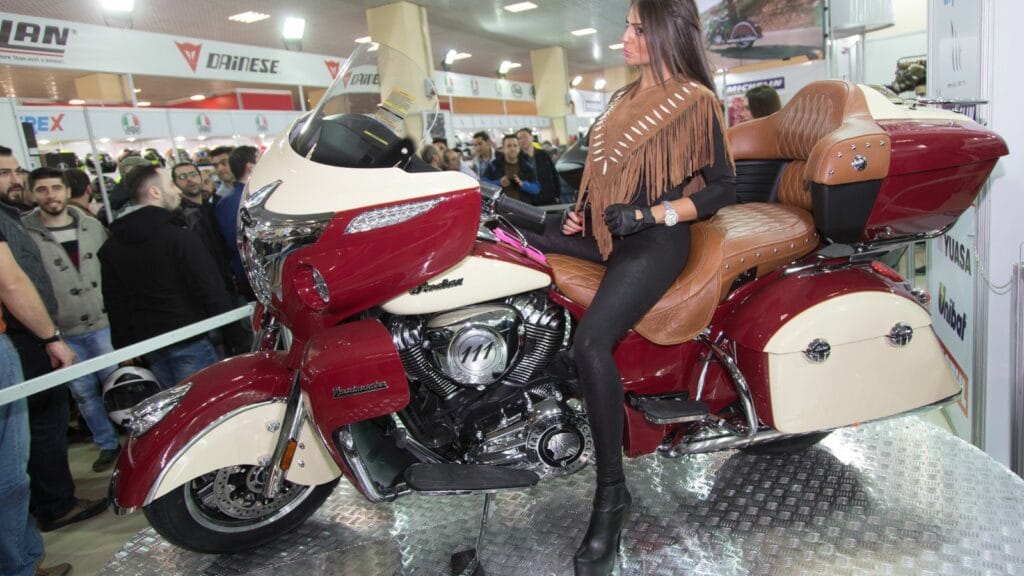Motorcycles are defined by the engines that power them. For decades, two layouts in particular have shaped how riders experience the road: the V twin and the V four. The V twin became the backbone of American and European motorcycling thanks to its torque, rumble, and character. The V four, meanwhile, brought smooth power delivery, exotic racing performance, and engineering brilliance. Together, they created bikes that became icons across continents. Here are ten legendary V twins and ten unforgettable V fours that left their mark on motorcycling history.
Legendary V Twin Engines: Harley Davidson Evolution 1340
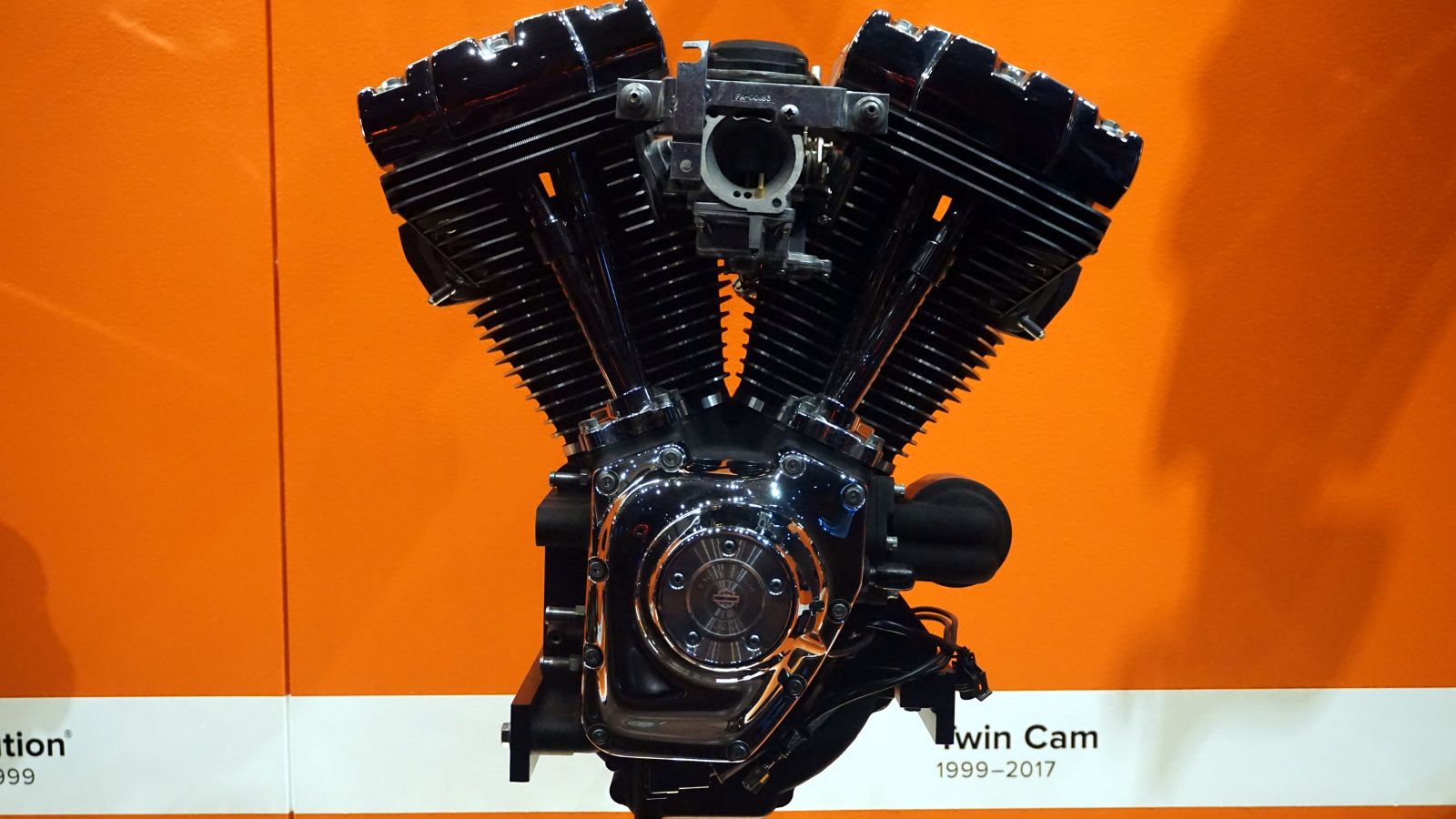
The Evolution engine, launched in 1984, was a turning point for Harley. It replaced the old Shovelhead with a 1340cc air cooled V twin that was far more reliable and easier to live with. This engine kept Harley alive during the tough 1980s and powered models like the Softail and Electra Glide. Canadians loved it for its long haul durability and for finally making Harleys less temperamental in cold climates. The Evo gave Harley the sound and feel riders craved but without the constant oil leaks and breakdowns of the past.
Ducati 916 Desmoquattro
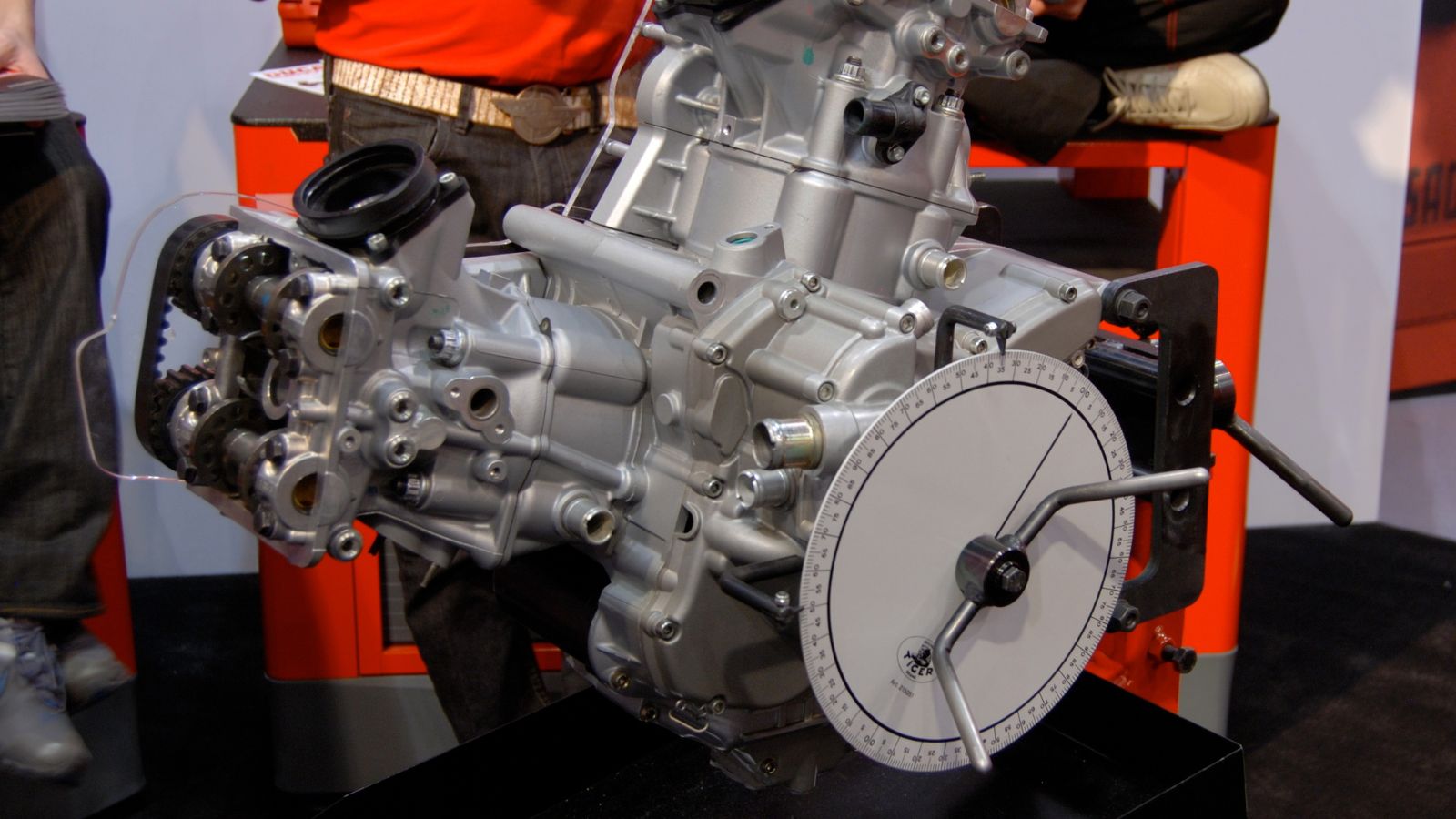
When Ducati released the 916 in 1994, it stunned the motorcycle world. The 916cc 90 degree V twin used desmodromic valves and delivered incredible race performance. With multiple World Superbike championships under its belt, it cemented Ducati as a dominant force. Beyond racing, its unique growl and aggressive style gave riders an intoxicating experience. In Canada, the 916 became a poster bike for an entire generation, proof that a V twin could dominate the racetrack and still be beautiful enough for a showroom.
Moto Guzzi V7
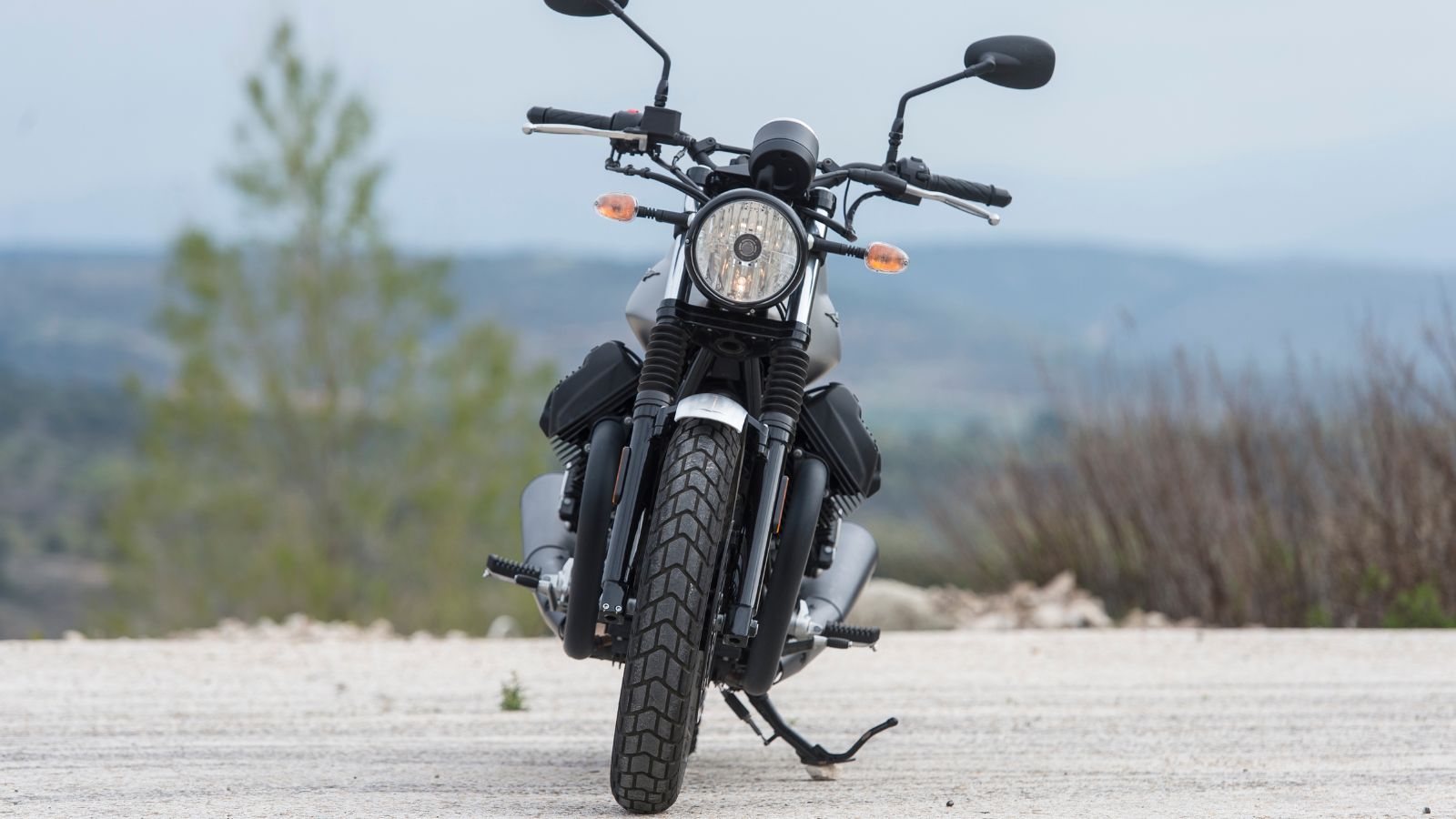
Moto Guzzi’s V7, introduced in the late 1960s, was the beginning of the brand’s signature transverse V twin design. The cylinders stick out sideways, giving the bike a distinctive look and mechanical feel. For decades it powered everything from touring machines to police motorcycles. Canadian riders admired the V7 for its old world charm and the way its engine shook and pulsed with character. It wasn’t about outright speed but about riding a piece of Italian motorcycling history.
Suzuki TL1000R
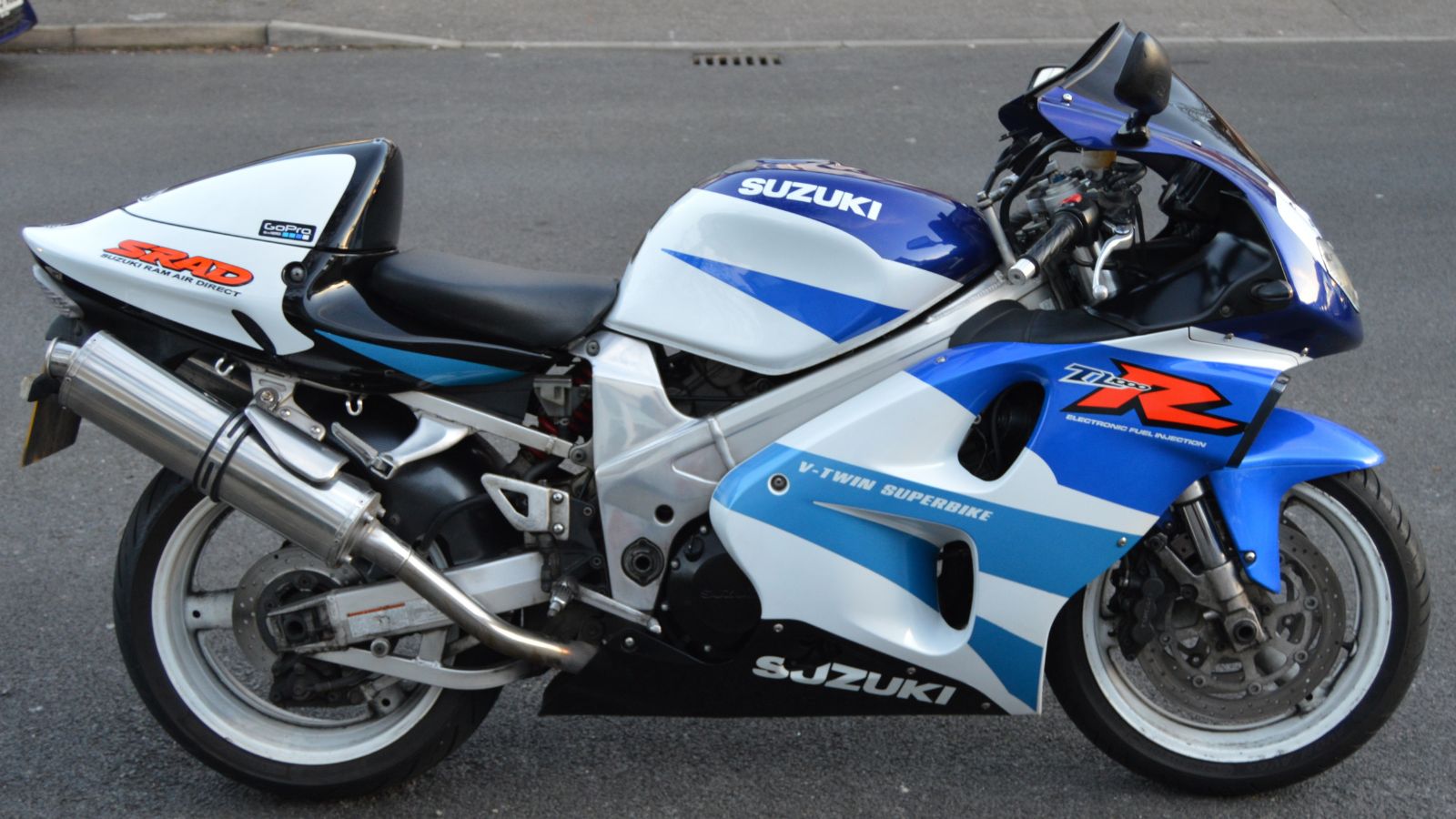
Suzuki built the TL1000R in the late 1990s to challenge Ducati in superbike racing. The 996cc liquid cooled V twin was powerful and reliable, even if the bike itself was criticized for its odd handling. The engine lived on, however, powering the SV1000 and other models. Riders in Canada respected the TL1000R for its ferocity and for showing that Japanese brands could build a twin with real grunt. While the chassis faded into obscurity, the engine became a legend in its own right.
Indian Thunder Stroke 111
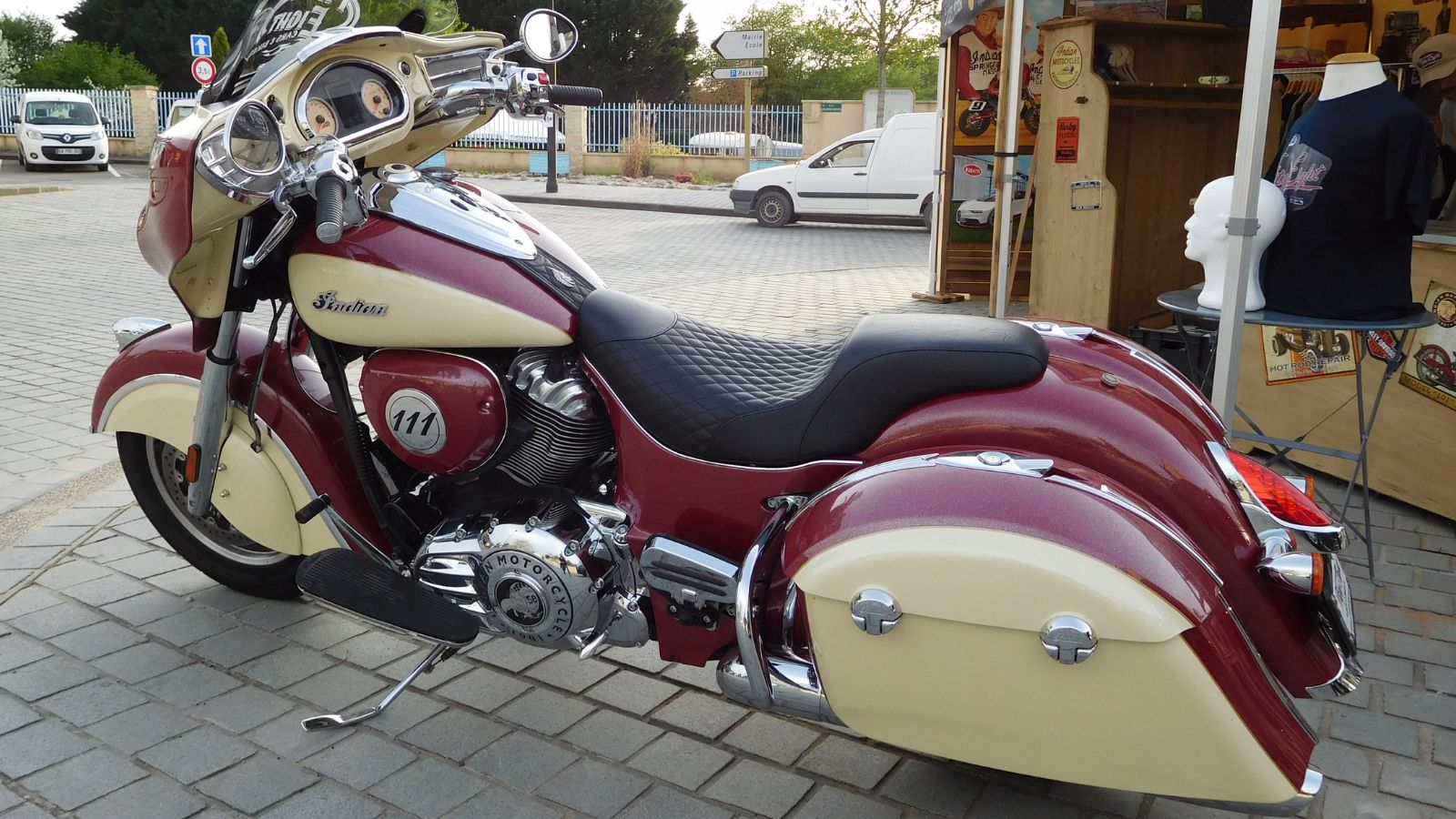
When Indian returned to the market in 2014, the Thunder Stroke 111 engine was at the heart of the revival. With 1811cc of displacement, it offered huge torque, traditional cooling fins, and styling cues that honored classic Indians. Canadian riders welcomed it as an authentic alternative to Harley. Its lazy, powerful character was perfect for long prairie roads or mountain highways. It showed that American style V twins didn’t have to come exclusively from Milwaukee.
Honda RC51 V Twin
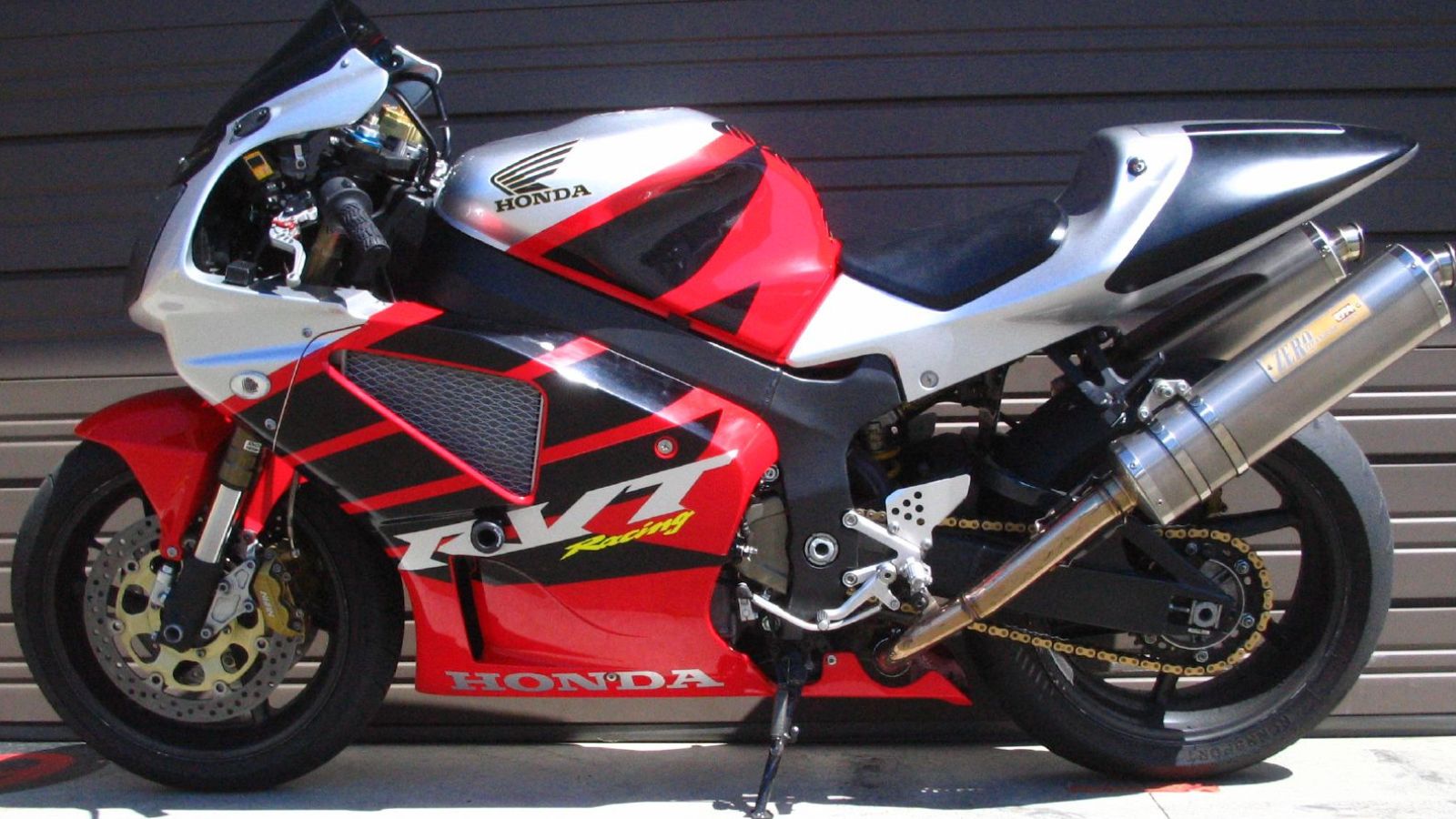
Honda’s RC51, also called the VTR1000 SP1 and SP2, was created in 2000 to take Ducati on in World Superbike racing. The 999cc V twin produced blistering power and paired with Honda’s bulletproof reliability, it took Colin Edwards to two WSBK titles. In Canada, the RC51 was admired as a no nonsense superbike with real race pedigree. Riders loved its combination of brute twin cylinder torque and Honda’s legendary engineering.
Buell Thunderstorm V Twin
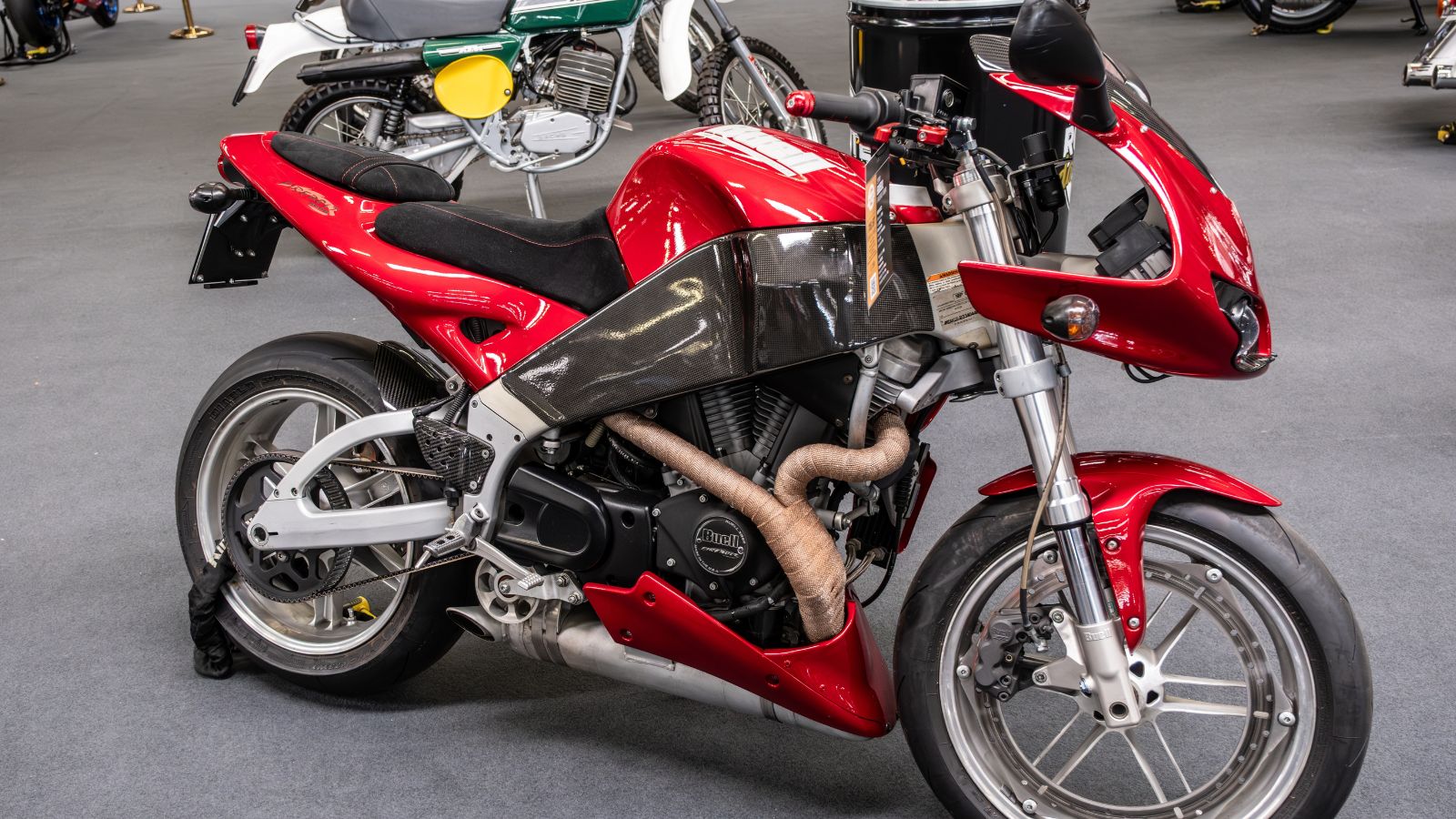
Buell was all about doing things differently, and the Thunderstorm V twin reflected that. Based on Harley’s Sportster engine but reworked with high compression heads, it became the powerplant for Buell’s sporty machines. Combined with Buell’s innovative chassis designs, the engine gave a raw, rebellious feel. Canadian riders who wanted something American but not traditional gravitated to Buells, and the Thunderstorm was central to their unique appeal.
KTM LC8 V Twin
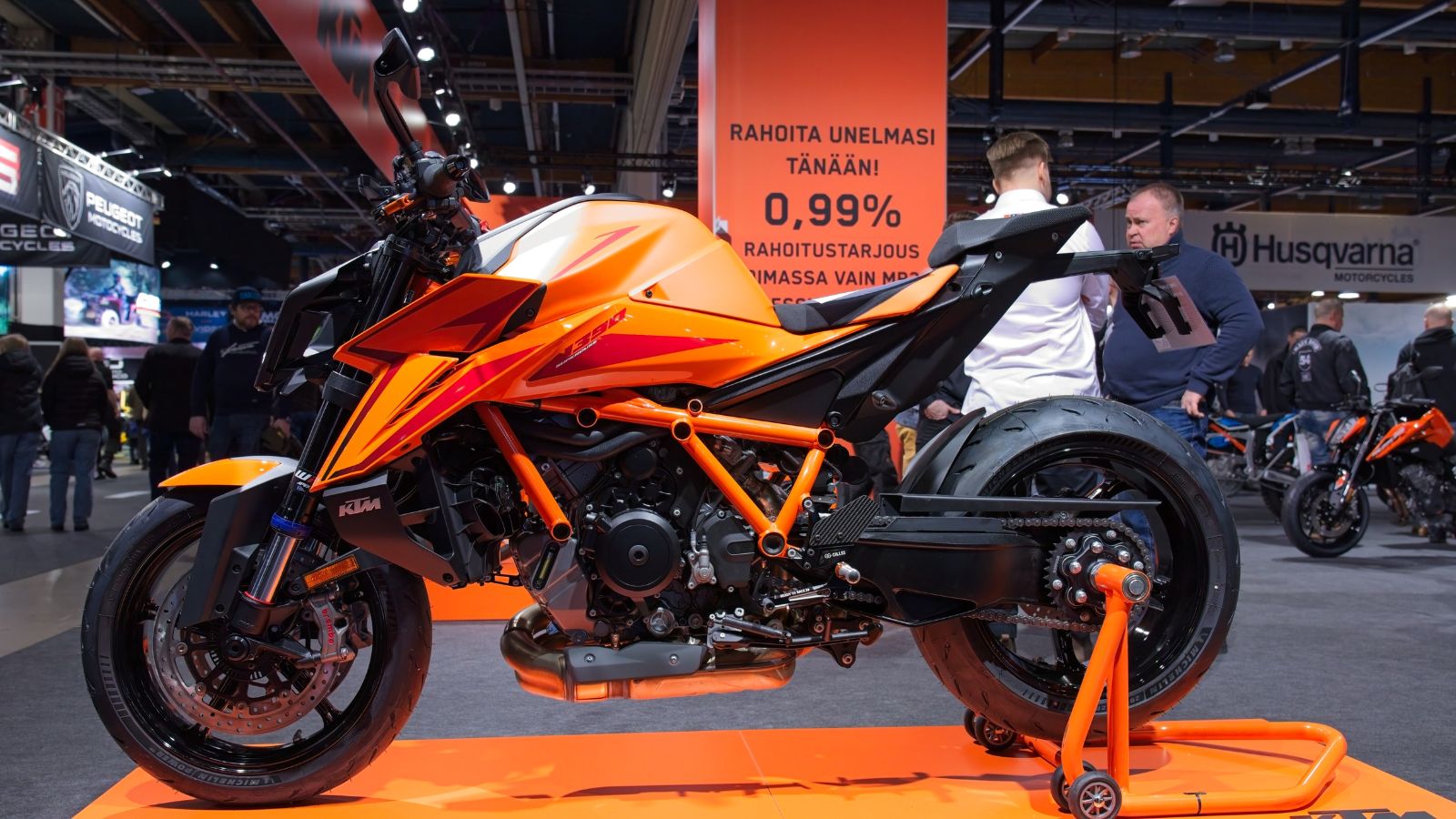
The LC8 V twin appeared in KTM’s 950 Adventure in 2003 and later the Super Duke. Compact, powerful, and relatively lightweight, it was the engine that put KTM firmly on the map in big street bikes. Adventure riders in Canada praised it for combining reliability with serious off road and touring ability. It gave KTM the credibility to stand alongside Ducati and BMW in the premium segment while still feeling distinctly Austrian.
Aprilia RSV Mille V Twin
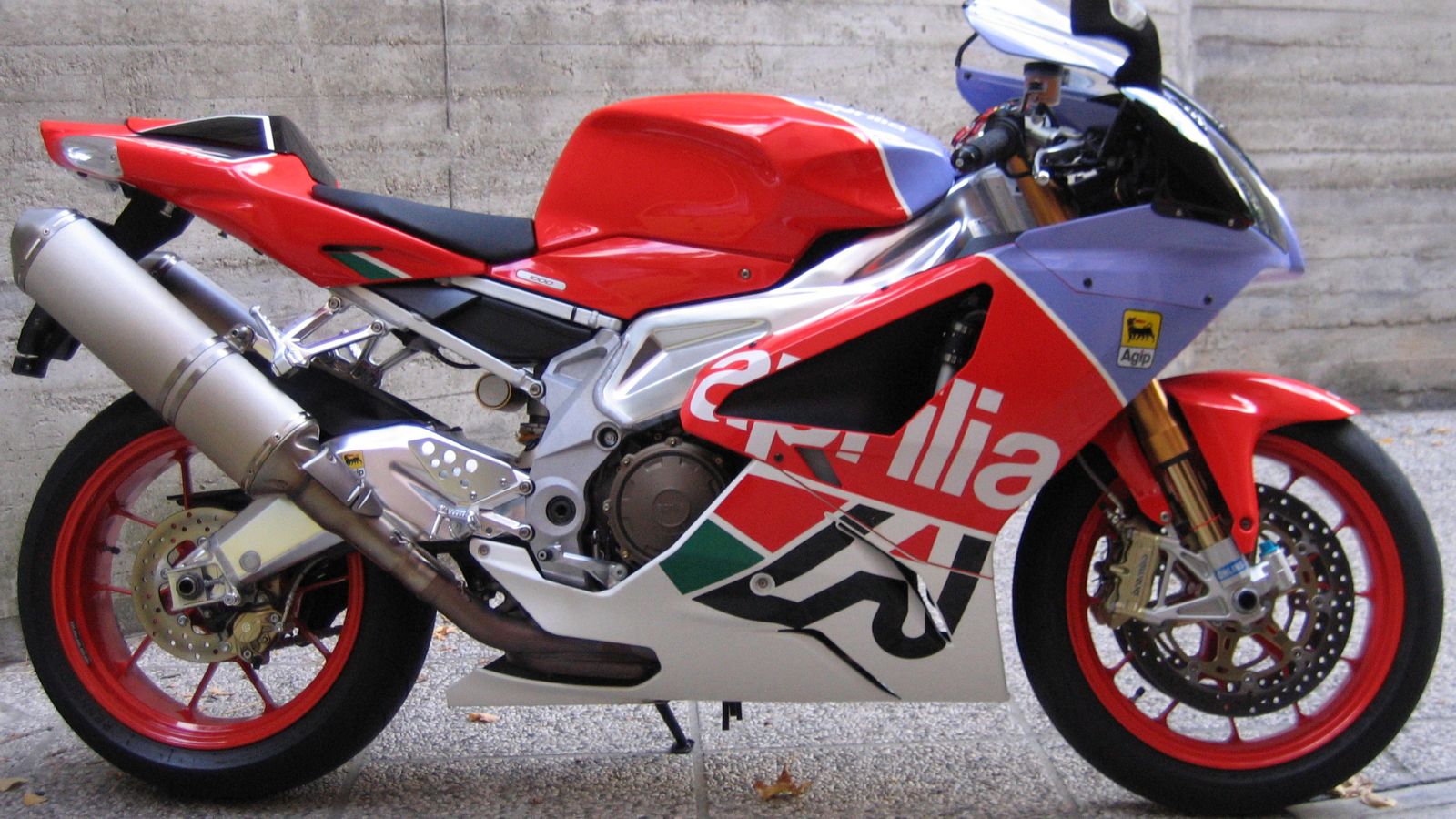
Aprilia’s RSV Mille debuted in 1998 with a Rotax built 998cc V twin. It was a superbike that combined Italian style with Austrian engine reliability. The Mille never matched Ducati’s sales numbers but earned a reputation among enthusiasts for being fast, smooth, and dependable. In Canada, it appealed to riders who wanted something exotic but more affordable and practical than a Ducati.
Harley Davidson Milwaukee Eight
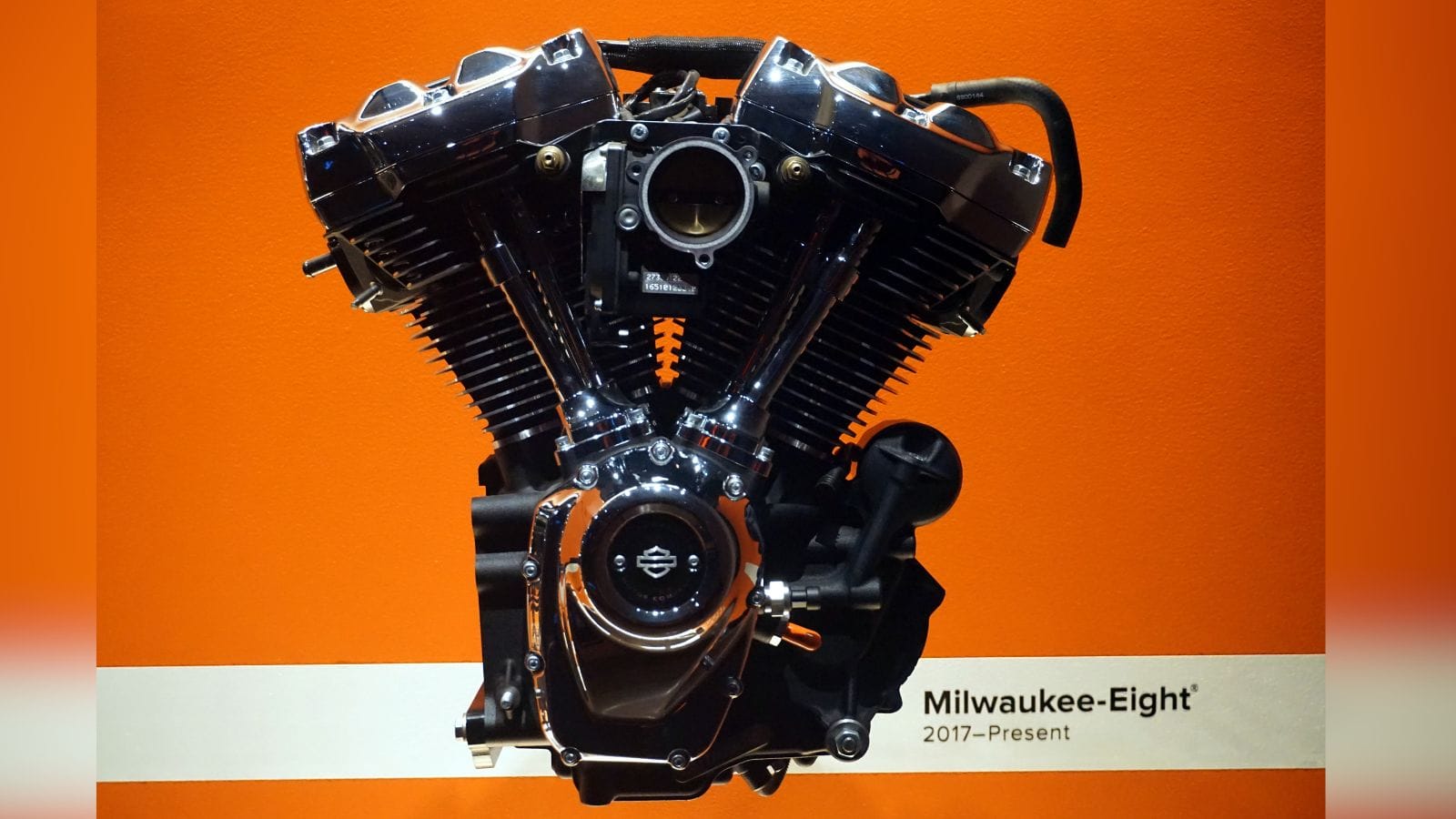
Introduced in 2017, the Milwaukee Eight is Harley’s most advanced V twin to date. With four valves per cylinder, better cooling, and stronger torque, it preserved the Harley sound while fixing long standing complaints about heat and performance. Canadians appreciated how it handled both city traffic and long cross country tours with less fuss. It represents Harley’s effort to stay true to its roots while modernizing for the future.
Legendary V Four Engines: Honda VFR750F
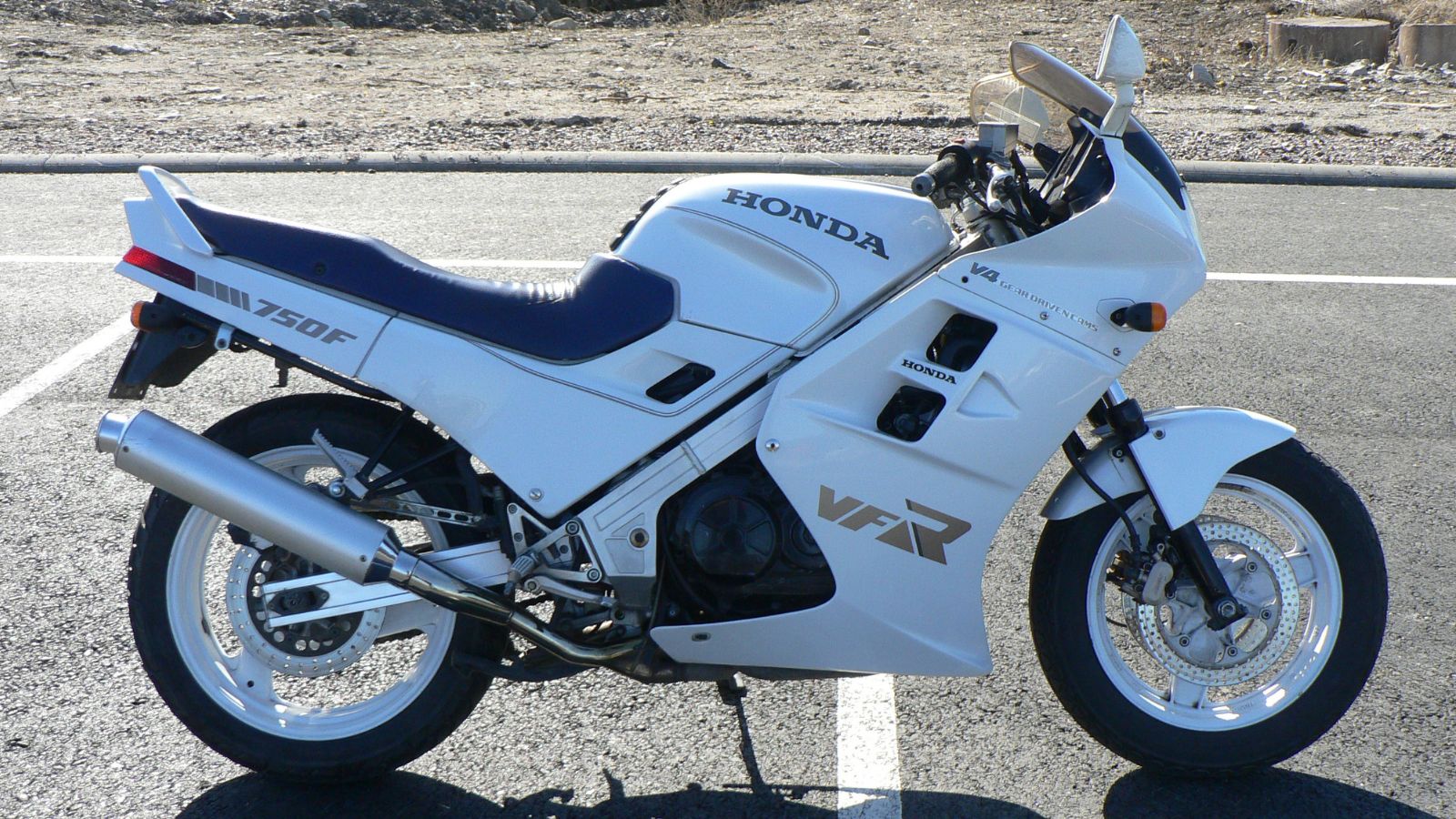
The Honda VFR750F of the mid 1980s set the standard for sport touring machines. Its V four engine with gear driven cams delivered silky smooth power and unmatched reliability. For Canadians who needed a bike that could tackle cross country trips without breaking a sweat, the VFR was the perfect tool. It proved that the V four could combine refinement with excitement in a way no other configuration could.
Yamaha VMAX 1200
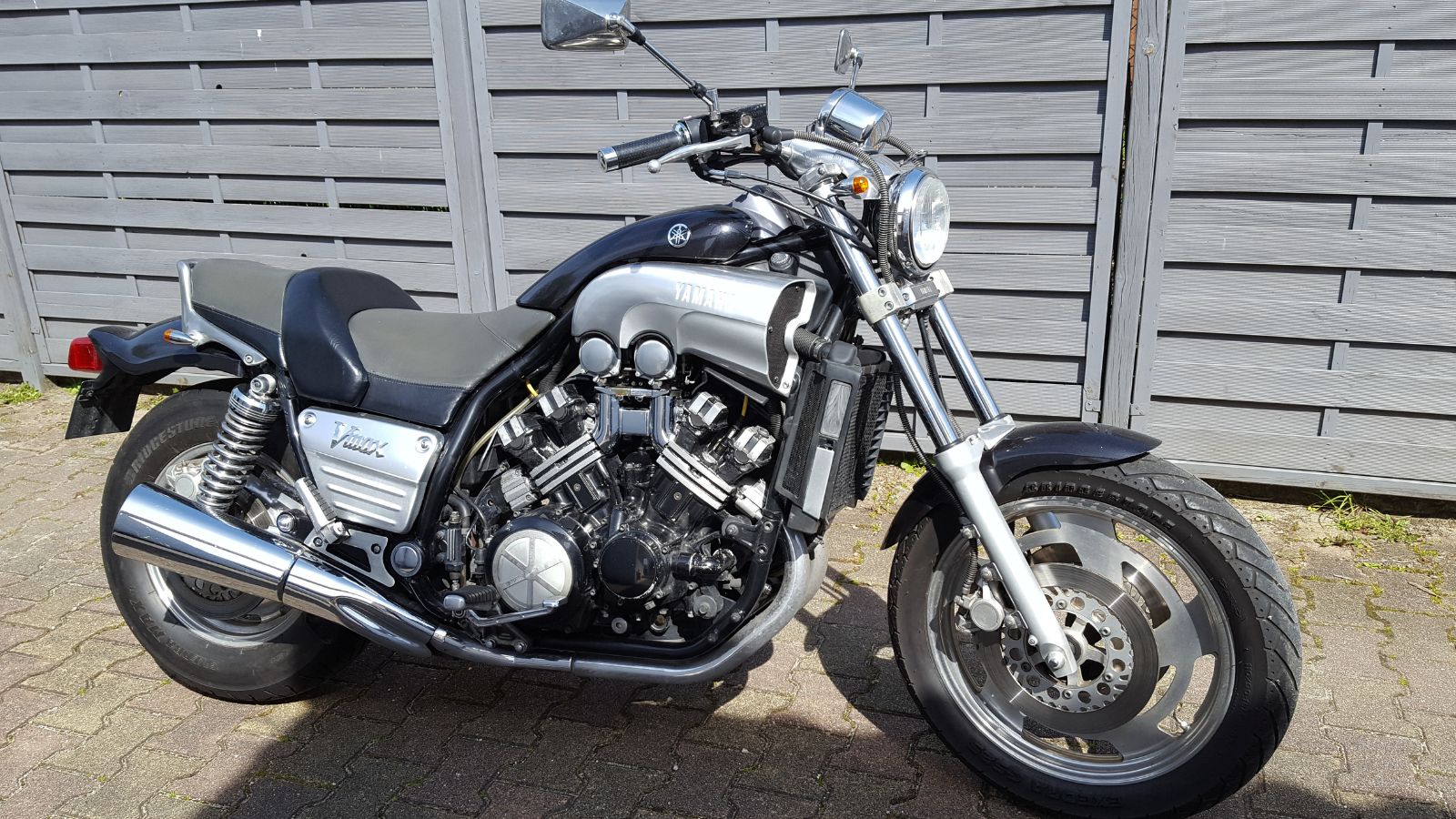
Launched in 1985, the VMAX was a muscle bike like no other. Its 1198cc V four featured the innovative V Boost system, which opened secondary carburetors at higher rpm for an explosive surge of power. In Canada it became a cult favorite, a bike known for terrifying acceleration and drag strip dominance. The VMAX showed the world that the V four could deliver brutal muscle as well as smoothness.
Honda NR750
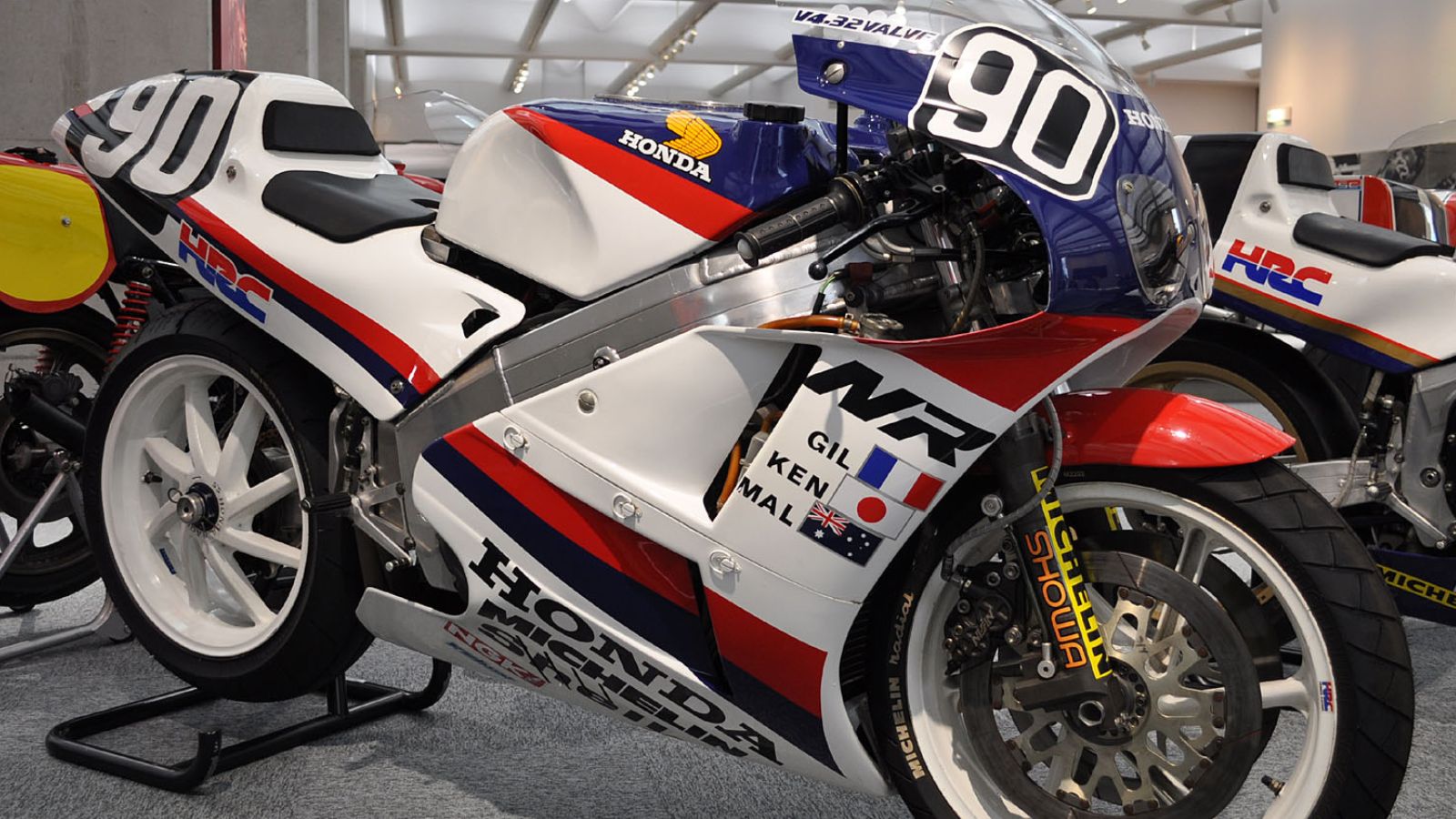
The NR750 remains one of Honda’s boldest projects. Released in 1992, it featured an oval piston V four engine that essentially acted like a miniature V8. It was exotic, extremely expensive, and very limited in numbers. In Canada it was almost mythical, rarely seen in the flesh. While few could own one, the NR750 symbolized the pinnacle of Honda’s engineering ambition and cemented the V four as a platform for innovation.
Suzuki RG500 Gamma V Four
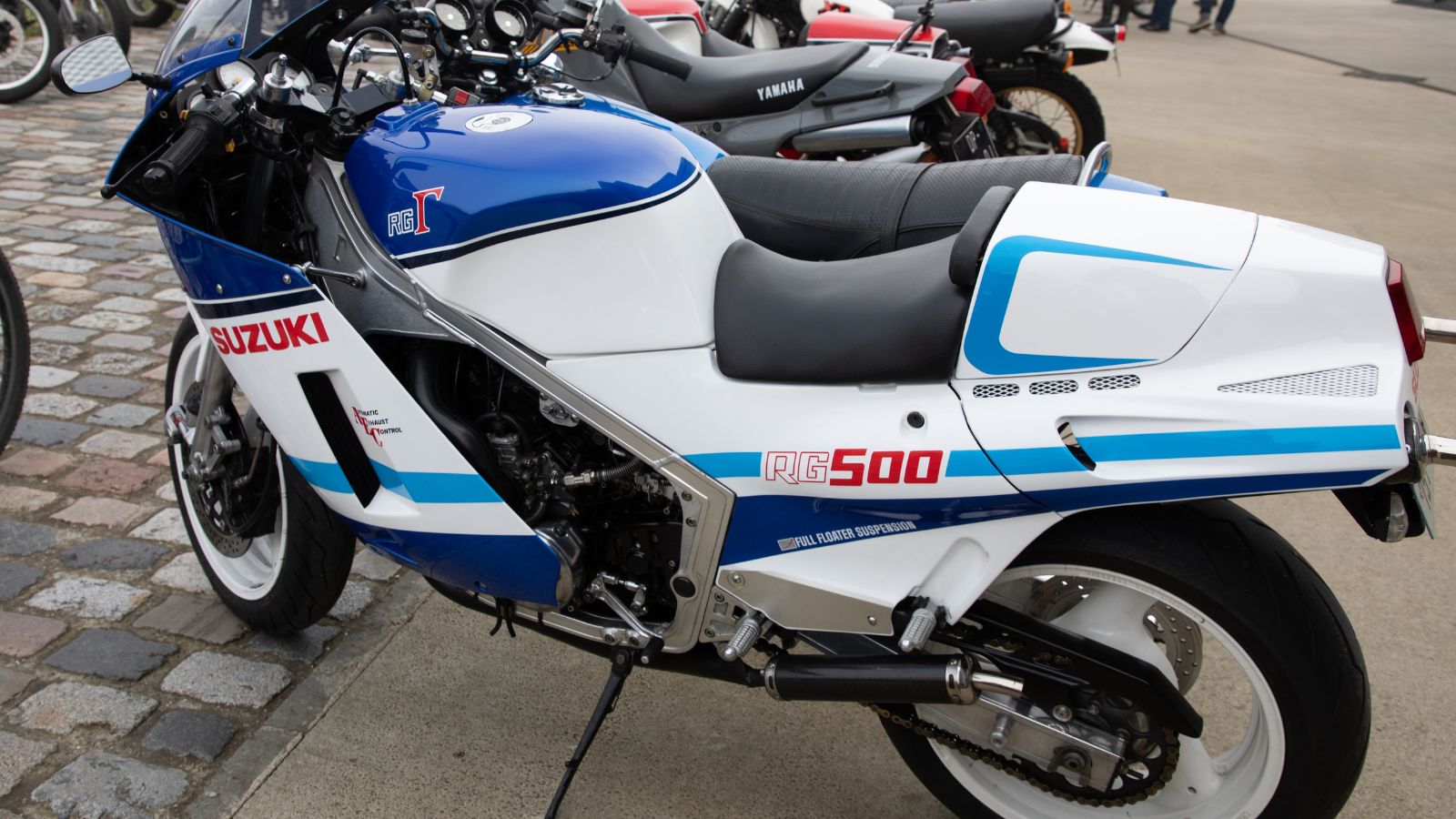
The RG500 Gamma of the 1980s was a road legal two stroke rocket. Its square four layout, effectively two V twins paired together, made it one of the wildest street bikes of its time. Canadian enthusiasts lucky enough to get their hands on one through imports discovered a machine that felt closer to a GP bike than anything sold new. Its legendary status is tied to its racing roots and raw performance.
Honda RC30 VFR750R
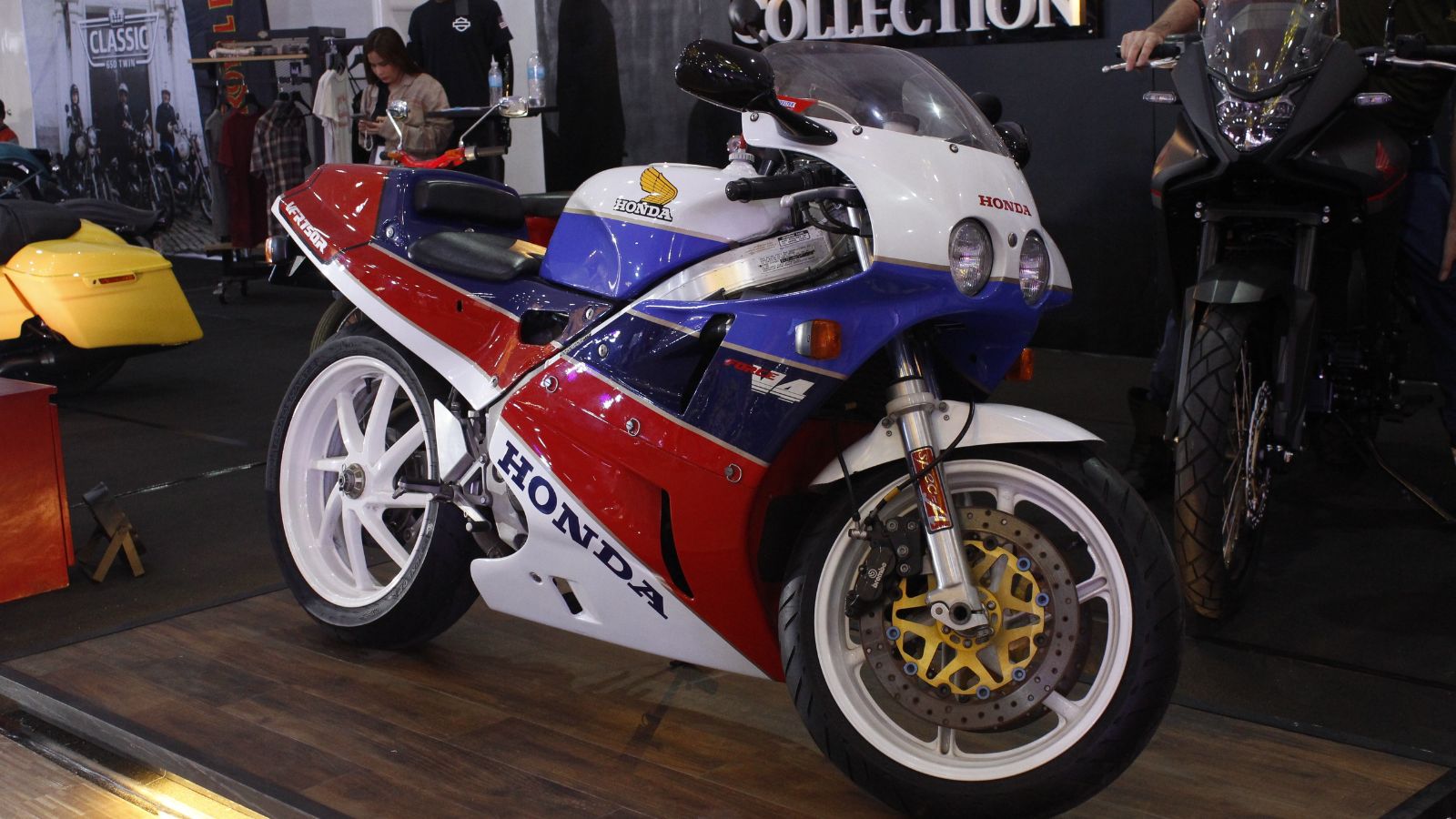
The RC30, launched in the late 1980s, was a homologation special designed to win in World Superbike. Its 748cc V four had gear driven cams and produced an intoxicating soundtrack. It became one of the most collectible motorcycles ever built, admired both for its race success and its exquisite engineering. Canadian collectors regard the RC30 as a crown jewel, a bike that defines the era of homologation specials.
Yamaha R7 OW02
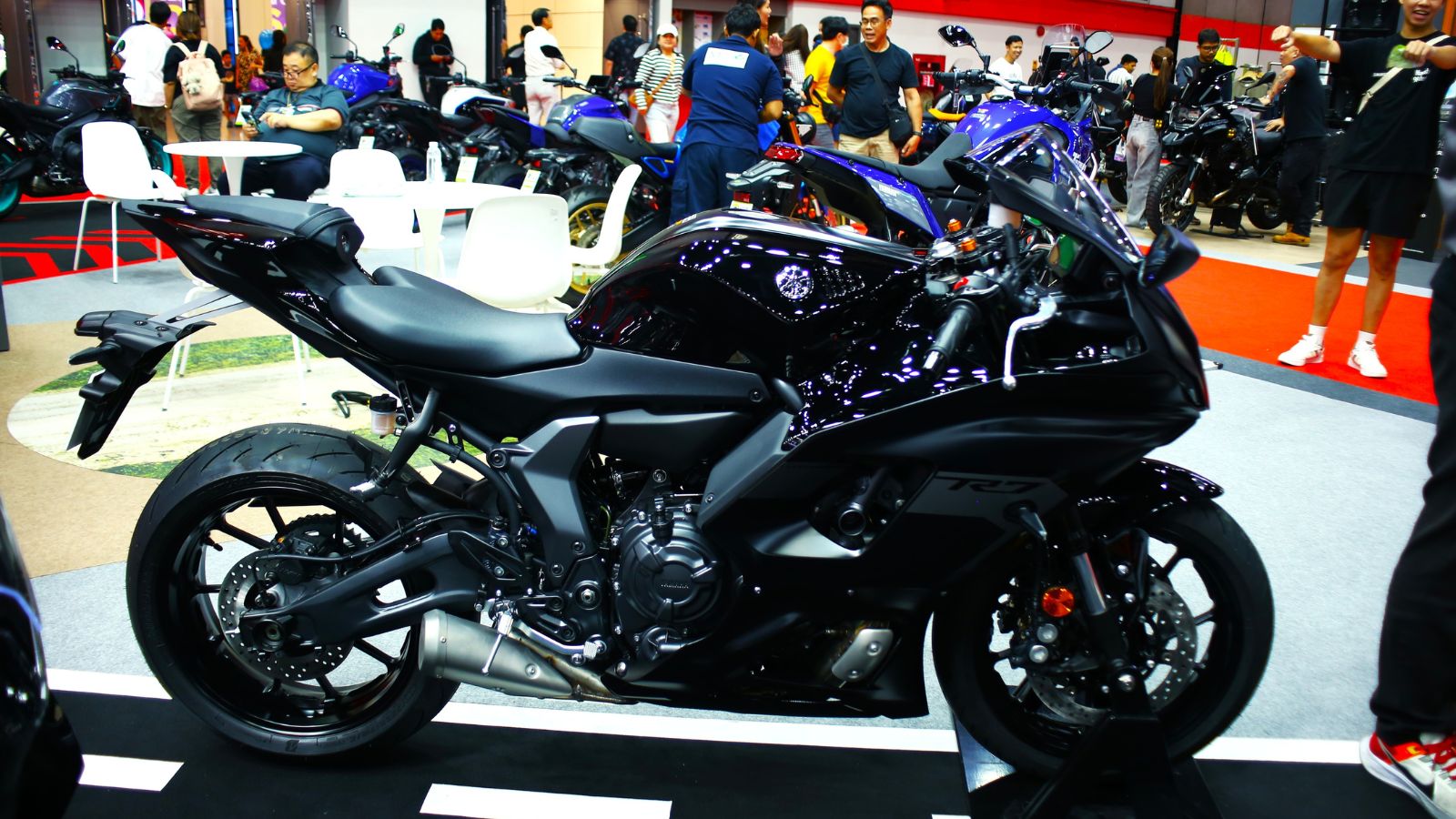
Yamaha released the R7 in 1999 as a homologation model for superbike racing. Its 749cc V four was highly tuned and required constant attention but it was an engineering marvel. Only a handful reached Canada, making it one of the rarest Yamahas ever. For those who know its history, the R7 remains one of the most exotic and desirable Japanese bikes of the modern era.
Honda RC213V S
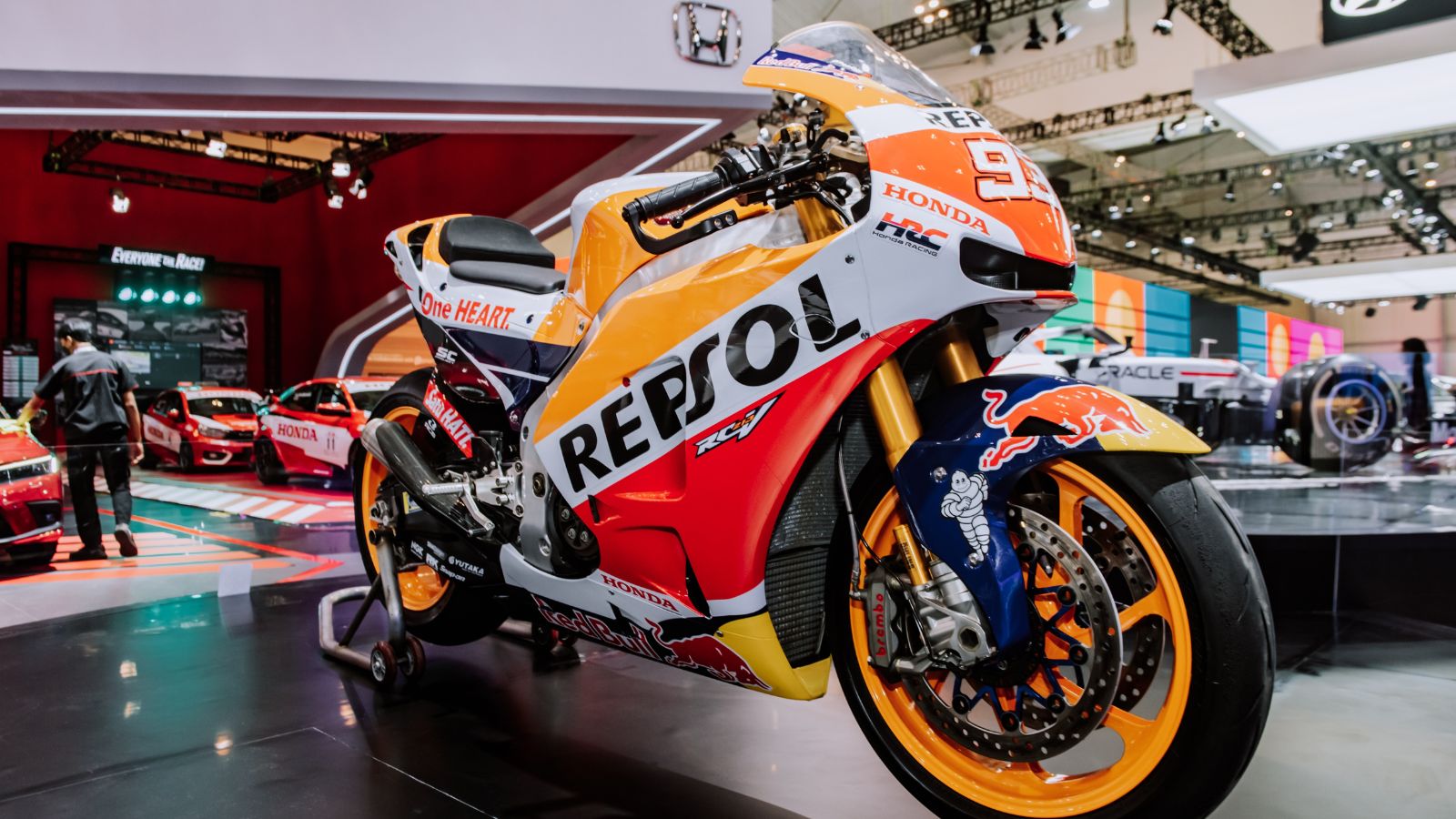
The RC213V S was essentially a MotoGP bike with lights. Released in 2015, it used a 999cc V four derived directly from Honda’s RC213V race machine. Priced astronomically high, it was one of the most advanced motorcycles ever sold to the public. For Canadian enthusiasts, simply seeing one was a rare event, and it represents the absolute cutting edge of V four technology.
Aprilia RSV4
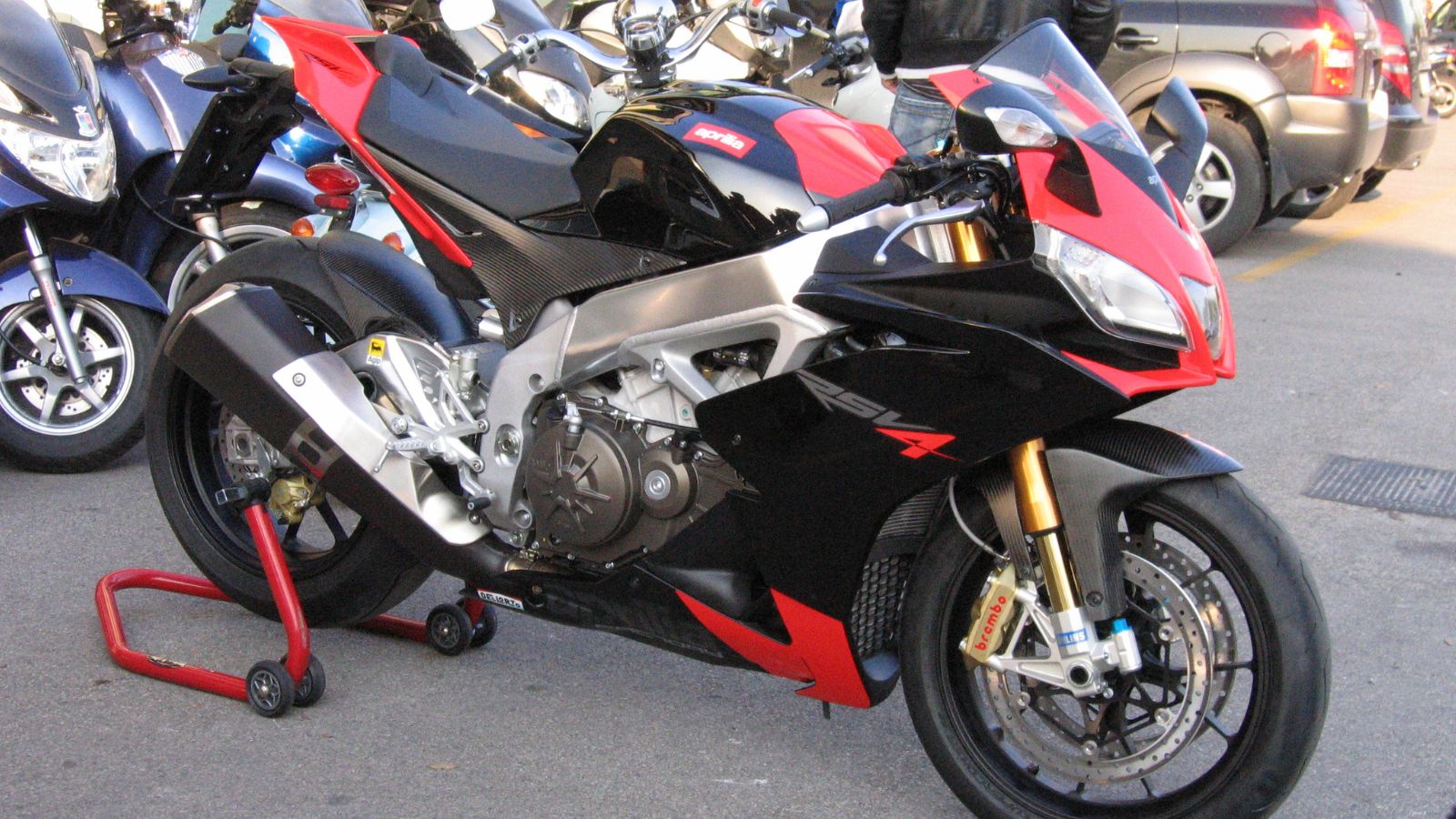
When Aprilia launched the RSV4 in 2009, it instantly redefined the superbike class. Its compact 999cc V four delivered high revving power and a soundtrack unlike any other. With multiple World Superbike titles, it has proven itself on the track while winning respect on the street. Canadian riders admire it as an exotic alternative to Japanese inline fours, a machine with soul and precision in equal measure.
Honda Magna V65
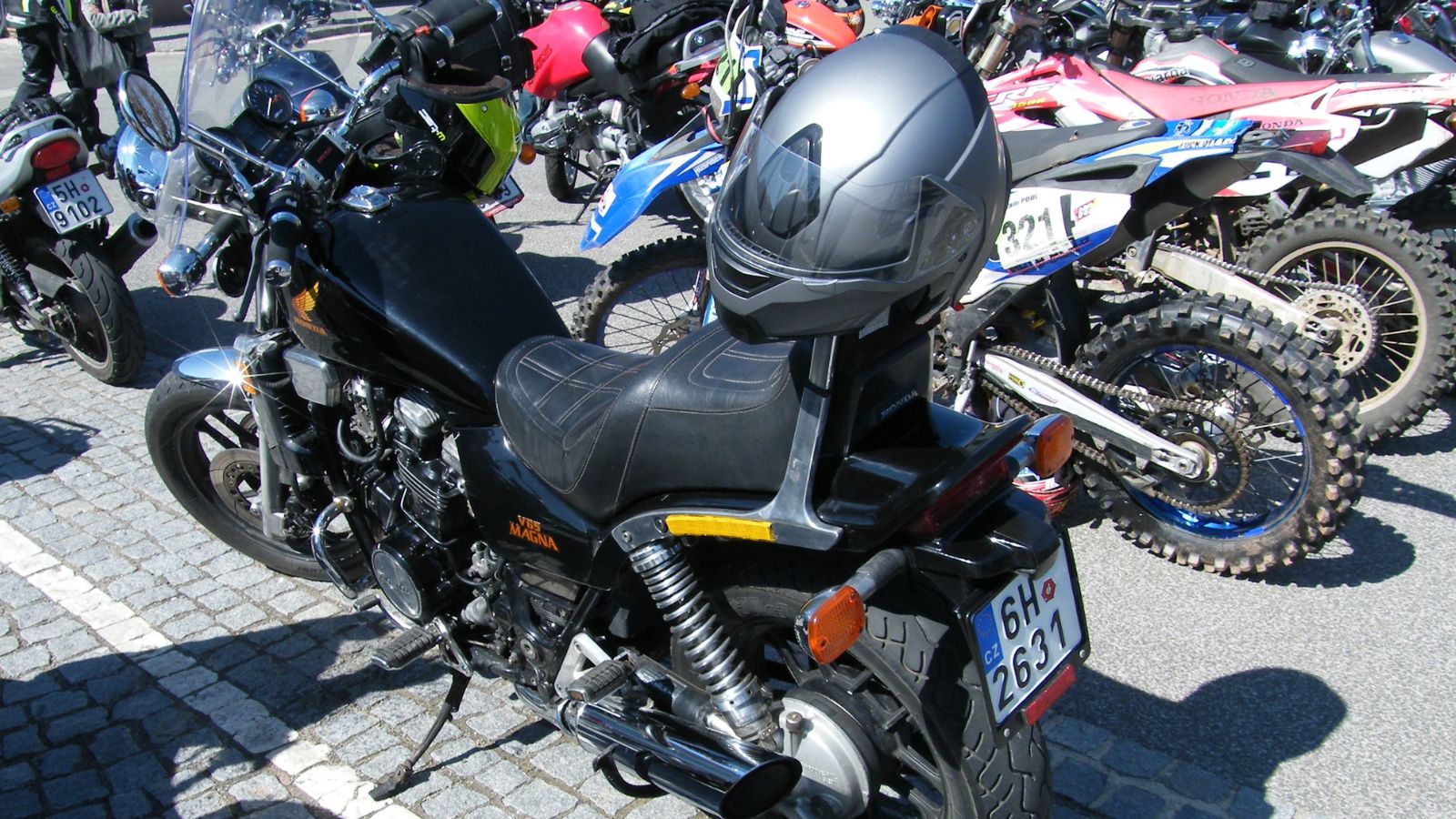
The Honda Magna V65 from the 1980s was a cruiser that shocked the world. Its liquid cooled V four produced nearly 120 horsepower, making it one of the fastest bikes of its era. In Canada, it became a cult favorite for riders who wanted the comfort of a cruiser but the performance of a superbike. The Magna’s engine was raw, powerful, and unforgettable.
Ducati Panigale V4
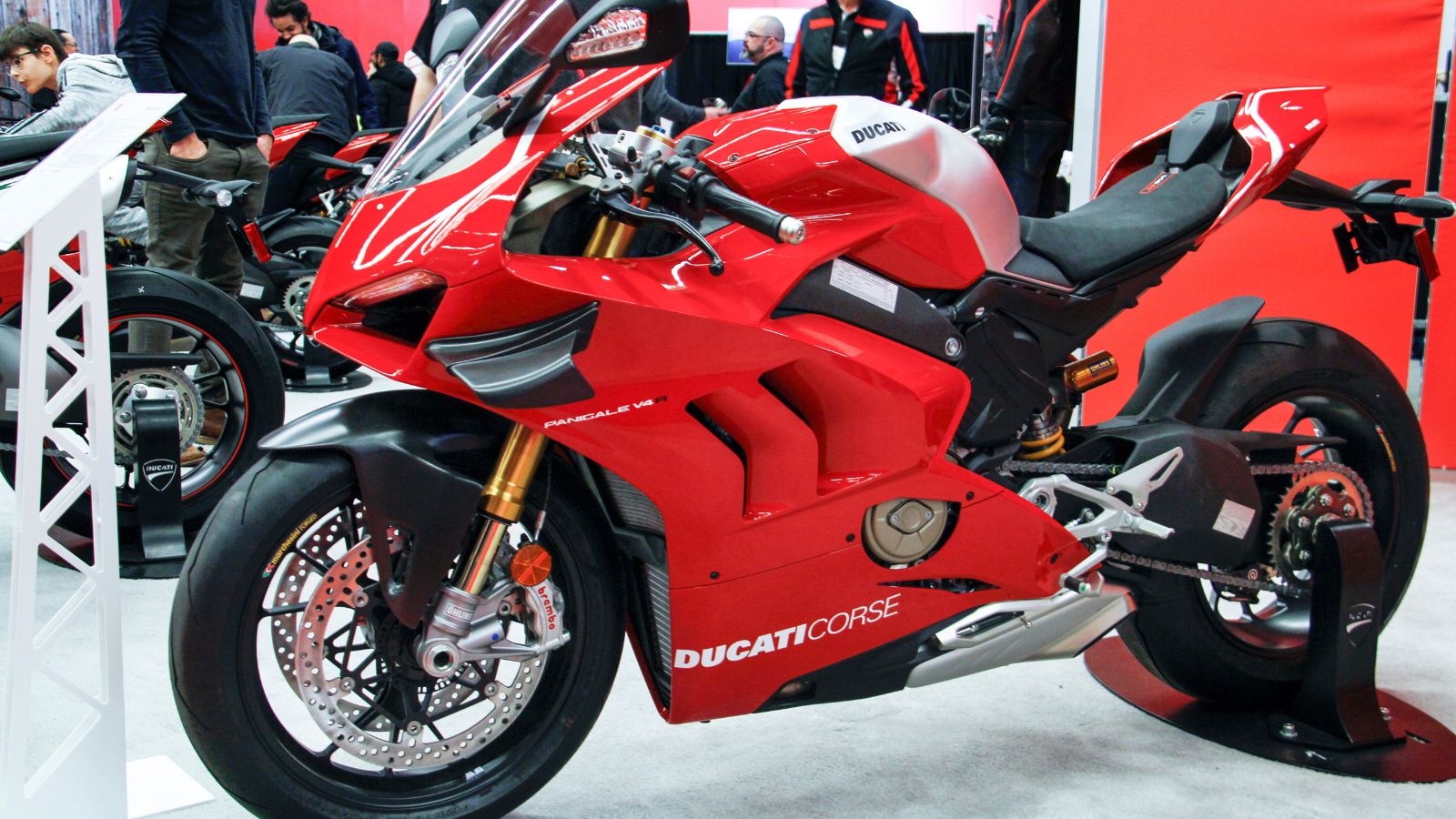
In 2018 Ducati broke with tradition and launched the Panigale V4, moving away from its beloved V twins. The Desmosedici Stradale V four was based on MotoGP technology and delivered outrageous performance. Canadians embraced it as Ducati’s boldest step into the modern superbike era. Its engine combines the best of racing pedigree with street usability, making it a legend in the making.
Why V Twins and V Fours Matter
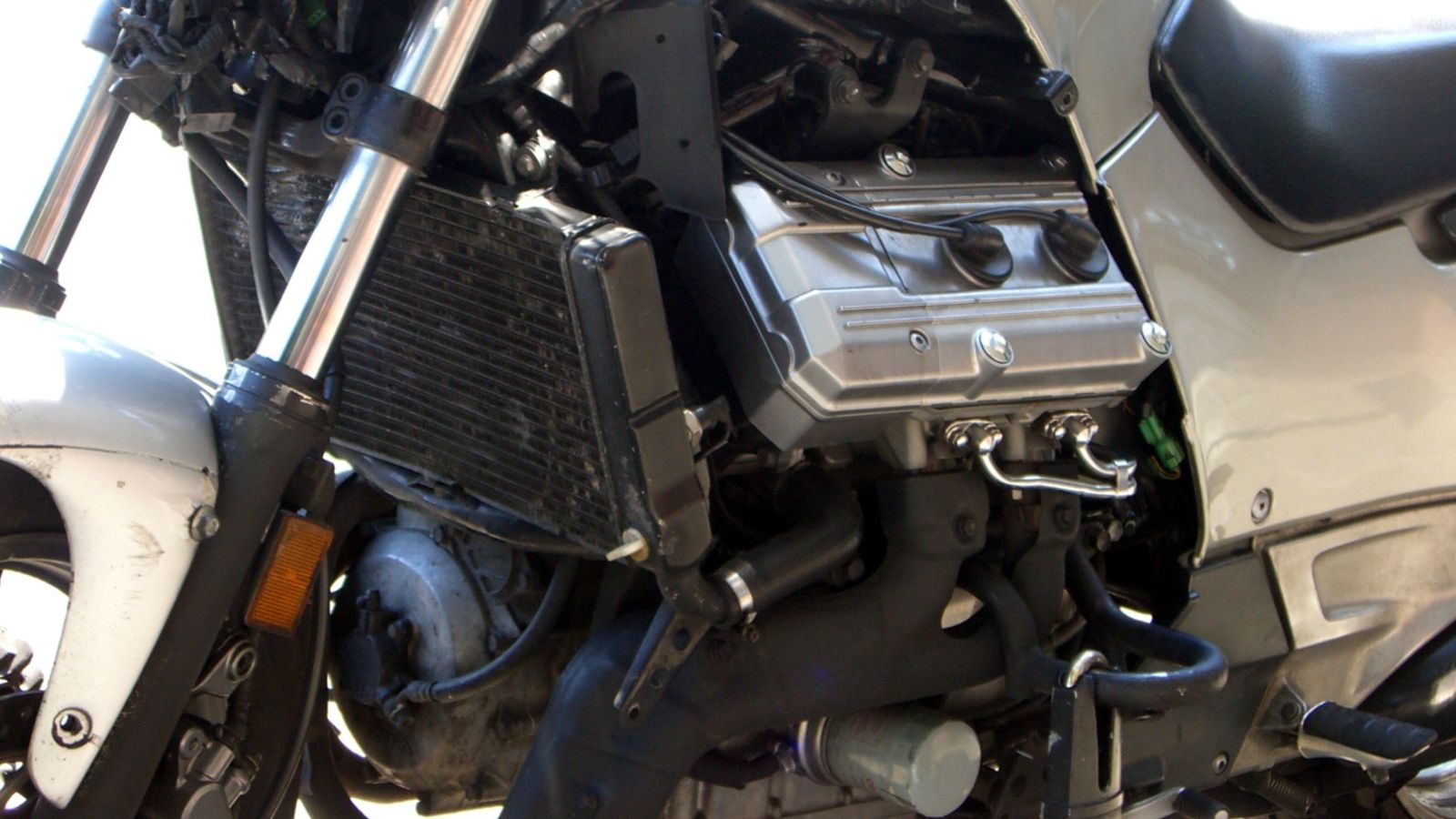
The V twin represents raw torque, character, and tradition while the V four symbolizes exotic smoothness, performance, and innovation. Both have created motorcycles that remain etched in memory long after production stopped. For Canadian and American riders, these engines define more than just performance numbers. They shape the sound, the feel, and the soul of the machines we ride. Whether it is the throb of a Harley Evolution or the scream of an Aprilia RSV4, these engines are proof that motorcycling is as much about emotion as it is about mechanics.
25 Facts About Car Loans That Most Drivers Don’t Realize

Car loans are one of the most common ways people fund car purchases. Like any other kind of loan, car loans can have certain features that can be regarded as an advantage or a disadvantage to the borrower. Understanding all essential facts about car loans and how they work to ensure that you get the best deal for your financial situation is essential. Here are 25 shocking facts about car loans that most drivers don’t realize:
25 Facts About Car Loans That Most Drivers Don’t Realize
